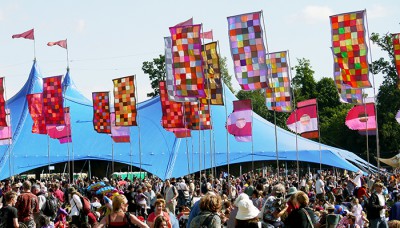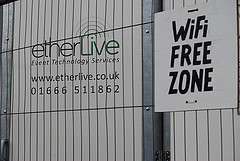 The topic of public or attendee Wi-Fi at events creates more churn and discussion than just about any other aspect in the technology arena. Organiser questions come thick and fast – Should we provide it? How should we charge for it? Will it work? Why does it cost so much? How many people will use it? The list goes on.
The topic of public or attendee Wi-Fi at events creates more churn and discussion than just about any other aspect in the technology arena. Organiser questions come thick and fast – Should we provide it? How should we charge for it? Will it work? Why does it cost so much? How many people will use it? The list goes on.
The approach to production, exhibitor and trader Wi-Fi is clear cut but for the public, opinion on approach, the need and value flip on a regular basis. This is not entirely surprising given the confusing and often incorrect messaging which swirls around the industry, accompanied by the fact that the topic is more complex than it initially looks.
If you are running an event in a location with little or no mobile coverage, then the desire to provide connectivity for attendees is well placed as there is an expectation in today’s world for ubiquitous connectivity and attendees will quickly rally round to complain if they are disconnected from the rest of the world.
Mobile 3G & 4G coverage at events is improving but outside of a select few the reality is the mobile networks are not designed to service the volume of users at large events which leads to sporadic or non-existent performance. Even if there is good mobile coverage the drive to provide a public Wi-Fi network may be down to different factors, not least by the fact that a dedicated network is in the control of the organiser providing opportunities to gather statistics, target advertising, monitor usage and offer interactive services.
How do I pay for it?
Monetising the provision is, however, a difficult area as directly charging for Wi-Fi access is not a good approach and sees very limited take-up. Users are offended by the idea that after paying to attend an event they are asked to pay extra for internet access which in their view is a utility and life-right, especially when in most scenarios Wi-Fi access is ‘free’. It may be accepted by an organiser that any provision is just an overhead cost, the value being in the good feedback and enhanced social media presence that such an offering provides but in most cases there is an expectation of some direct value or cost recovery.
The key point is not to focus on the Wi-Fi connection but to look beyond at what the connection delivers – that may be additional paid for content, sponsorship and advertising, attendee interaction, geo-fencing and location services, add on experiences which are sold through the network, payment systems or other value-add elements which may be more accepted as a paid-for offering.
What capacity do I need?
One of the hardest things about public Wi-Fi at events is predicting usage and capacity required. There are multiple vectors to this but historical data and experience provide a good starting point. The key aspect is the likely amount of concurrent users as this drives the high water mark for system capacity.
The first vector is the type of event, a music festival for example will typically see a lower concurrent usage percentage than a more business focused event such as an exhibition. This is driven by the immediacy of modern business working versus the more local experience of a festival, coupled with the need at a festival to conserve battery life such that Wi-Fi is turned off unless actually required. Interestingly though over the course of a multi-day festival a higher percentage of attendees will use the Wi-Fi at some point compared to a business focused exhibition. In our experience we would not expect concurrent usage at a festival to be more than 10-20%, whereas an exhibition may be closer to 30-40%.
The second vector is the duration of an event, crudely the shorter the event the higher the percentage of concurrent users. This dynamic is partly down to the battery life concern at multi-day events in contrast to the ‘in the moment’ social media nature of a short event that is likely to have a single focal point and may see concurrent usage rise above 50%
The last vector is the hardest to predict – the marketing and messaging from the event itself. A smartphone app, twitter walls, content, streaming, promotions and campaigns can all drive up usage significantly and need to be understood as part of the planning cycle. Public Wi-Fi providing a low key email and internet access service is very different to the launch of a new 150MB smartphone app with rich content that everyone needs to download in the first hour of an event!
Will it work? What will it cost?
This brings us to the technical aspect and the associated cost. The big factors are the coverage area, the user density and the internet backhaul required. High density Wi-Fi is a very different beast to normal Wi-Fi – it involves much more complex design with sector based antennas, high end Wi-Fi access points, very careful spectrum (radio) management and various networking approaches to ensure the system does not saturate and grind to a halt. In front of a crowded stage with 10,000 people it requires a lot of Wi-Fi magic to deliver an acceptable service.
Coverage area adds an additional non-linear cost increase, especially in a green-field environment, simply down to the practicalities of deployment and connecting the entire network together. A typical device such a smartphone will only work reasonably if it is within about 100m of a Wi-Fi access point so if you are trying to cover 200 acres that’s a lot of access points all of which need to be connected together and have a source of power.
Behind all of this there has to be suitable internet connectivity (backhaul), many deployments are let down by not having enough backhaul or by having the wrong type. Some methods of internet connectivity are just not suited to a public Wi-Fi deployment where there may be thousands of users all chatting away simultaneously.
This all may seem a little overwhelming but it shouldn’t be, a well-planned and thought through deployment can be very successful but it needs to be a larger discussion than just the practicalities of making it work, including those who lead areas such as marketing and sponsorship. The demands on connectivity at events will only continue to increase and the best way to service that need is a clear approach around public Wi-Fi which forms part of the overall event strategy rather than as a costly bolt on.






